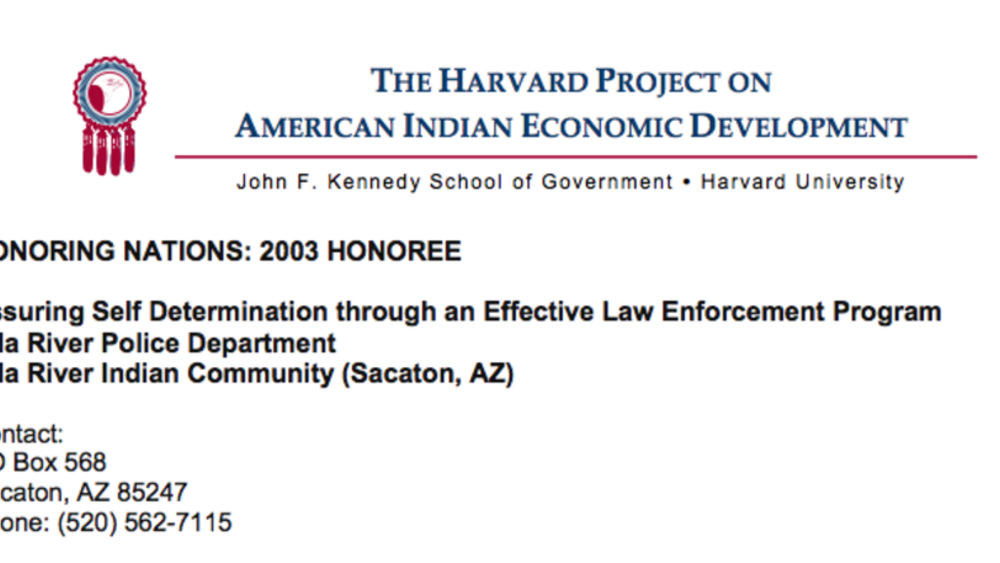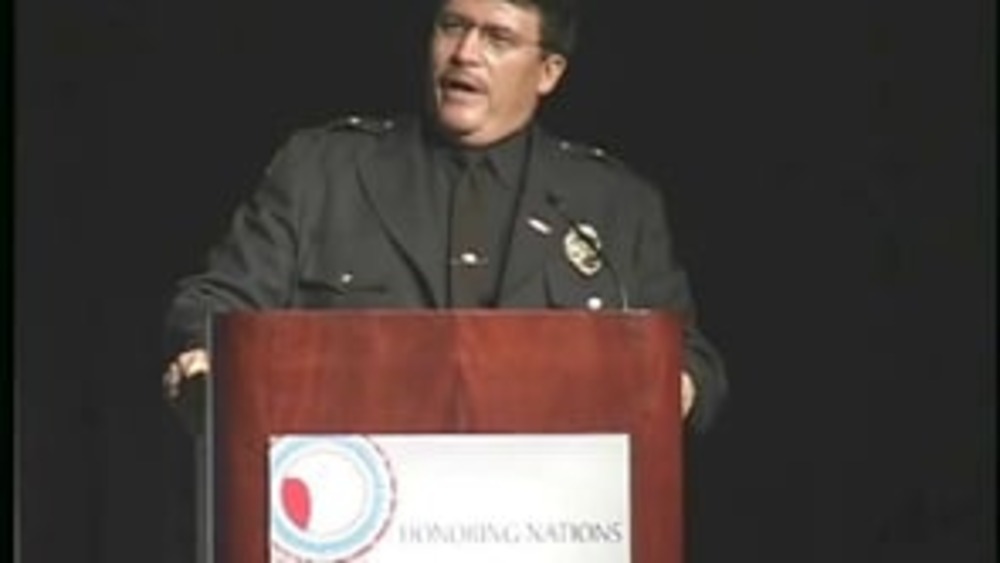Indigenous Governance Database
community-based policing
Thumbnail or cover image

Gila River Law Enforcement Program
Serving a population of 17,000, the 92-employee Gila River Police Department operates a multifaceted law enforcement program that includes community-based policing, neighborhood block watch programs, a citizen’s police academy, and bike patrols. Since assuming control over law enforcement in 1998,…
Thumbnail

Honoring Nations: Ken James: The Flandreau Police Department (2005)
Former Flandreau Police Chief Ken James present an overview of the Flandreau Police Department to the Honoring Nations Board of Governors in conjunction with the 2005 Honoring Nations Awards.
Thumbnail
Honoring Nations: Ken James: The Flandreau Police Department (2007)
Former Flandreau (South Dakota) Police Chief Ken James discusses how the Flandreau Police Department works to provide culturally sensitive law enforcement to all of the citizens it serves.
